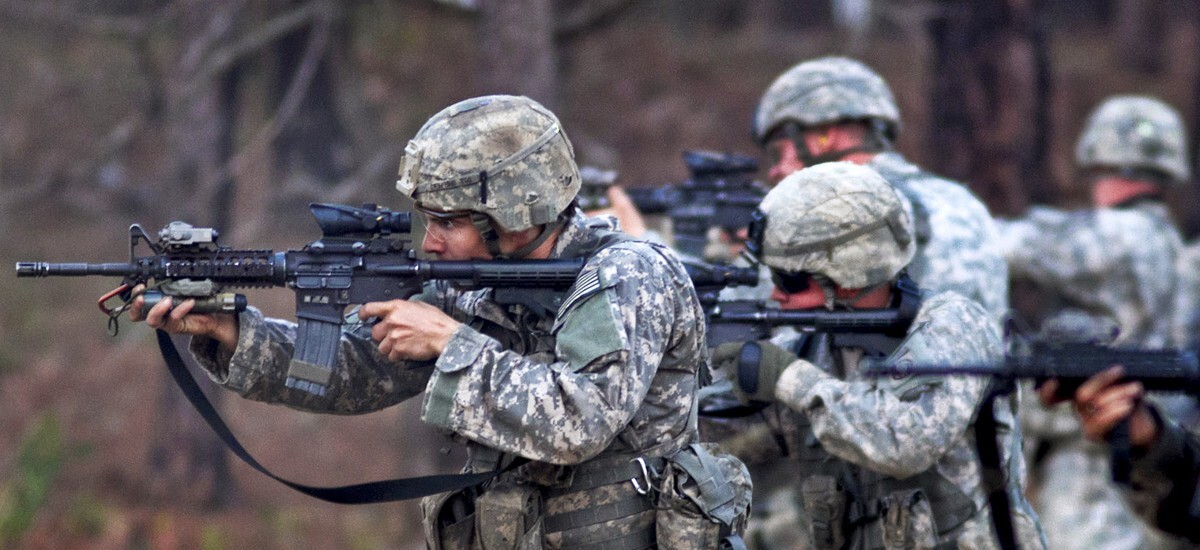
Ever wondered about the secrets and untold stories behind military operations and history? Well, you're in for a treat! Our world's military history is packed with intriguing, sometimes jaw-dropping facts that don't always make it into the history books. From ancient strategies that shaped the fates of empires to cutting-edge technologies that seem straight out of a sci-fi movie, the military world is a goldmine of fascinating tidbits. OhMyFacts is here to pull back the curtain, offering you a sneak peek into some of the most astonishing military facts you might not know. Ready to have your mind blown? Let's march into the unknown and uncover the stories that have shaped our world, one fact at a time.
Key Takeaways:
- "The Art of War" by Sun Tzu, written over 2,000 years ago, still influences how people approach business and sports, showing that ancient military wisdom is timeless and applicable in various fields.
- From the invention of canning during the Napoleonic Wars to the use of drones in modern warfare, technology has continually reshaped military tactics and logistics, proving that innovation is crucial for success in battle.
Understanding Military History
Military history is vast and filled with countless stories, strategies, and facts that have shaped the world as we know it today. From ancient battles to modern warfare, the evolution of military tactics and technology is both fascinating and complex. Let's dive into some lesser-known facts about military history that might surprise you.
-
Sun Tzu's "The Art of War", written around 500 BC, remains one of the most influential military strategy books in the world. Its teachings on warfare and strategy are still applied in various fields outside the military, including business and sports.
-
The Napoleonic Wars (1803-1815) saw the introduction of canning as a method to preserve food. This innovation allowed armies to carry their food supplies over long distances without spoiling, changing the logistics of military campaigns.
Technological Advances in Warfare
With each passing era, technology has played a pivotal role in shaping military capabilities and strategies. From the invention of gunpowder to the development of drones, technological advancements have continually redefined the battlefield.
-
Drones, initially developed for reconnaissance and surveillance, have become integral to modern warfare, capable of performing precise strikes without risking pilot lives.
-
During World War II, the Enigma machine was used by the Germans to encrypt messages. The Allies' ability to crack Enigma codes was a turning point in the war, highlighting the importance of cryptography in military strategy.
Unconventional Warfare Tactics
Warfare is not always about direct confrontation. History is replete with examples of unconventional tactics that have led to surprising victories against seemingly insurmountable odds.
-
The Trojan Horse is one of the earliest recorded instances of psychological warfare, dating back to the Trojan War, where Greeks used a deceptive tactic to gain entry into the city of Troy.
-
In the Vietnam War, the Viet Cong used an extensive network of tunnels, known as the Cu Chi Tunnels, to conduct guerrilla warfare against American forces. This network allowed them to move undetected and launch surprise attacks.
Women in the Military
Women have played crucial roles in military history, often breaking through barriers and challenging stereotypes.
-
During World War II, Lyudmila Pavlichenko, a Soviet sniper, was credited with 309 kills, making her one of the most successful female snipers in history.
-
The U.S. Army Nurse Corps was established in 1901, but it wasn't until 1947 that women in the military were granted permanent status, paving the way for future generations of women in armed forces.
Lesser-Known Conflicts
While some wars have dominated history books, many conflicts have occurred quietly, shaping regions and nations without widespread recognition.
-
The War of the Pacific (1879-1884), fought between Chile and a Bolivian-Peruvian alliance, drastically changed the map of South America, with Chile gaining significant territories rich in natural resources.
-
The Chaco War (1932-1935) between Bolivia and Paraguay was one of the first conflicts where both sides employed modern military technology, such as machine guns and airplanes, in South America. Despite its significance, it remains relatively unknown outside the continent.
A Final Salute to Surprising Military Facts
We've marched through a landscape rich with military facts, uncovering stories and truths that often stay hidden in the shadows of history books. From the strategic use of animals in warfare to the innovative technologies that have shaped battles, these insights offer a deeper understanding of the complexities and ingenuity found within military history. Whether it's the surprising endurance of messenger pigeons or the transformative impact of cyber warfare, each fact serves as a reminder of the evolving nature of combat and defense. As we close this chapter, let's carry forward the appreciation for the sacrifices made and the lessons learned, ensuring that the bravery and brilliance of those who've served continue to inspire and inform future generations.
Frequently Asked Questions
Was this page helpful?
Our commitment to delivering trustworthy and engaging content is at the heart of what we do. Each fact on our site is contributed by real users like you, bringing a wealth of diverse insights and information. To ensure the highest standards of accuracy and reliability, our dedicated editors meticulously review each submission. This process guarantees that the facts we share are not only fascinating but also credible. Trust in our commitment to quality and authenticity as you explore and learn with us.


